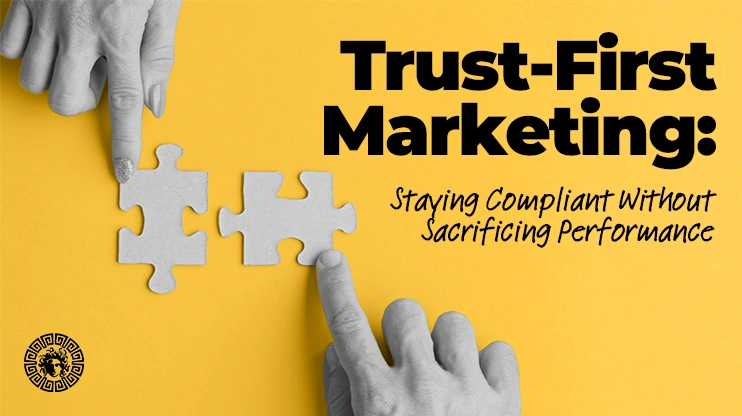Change is the only constant in the world of B2B sales. Over the last few years, one of the most significant shifts has been the increase in the duration of sales cycles. Earlier, the sales cycle took weeks, but now it stretches more than a month or even quarters.
The reason behind this lengthening of the sales cycle is that now the buyers are more cautious, more people are involved in the decision-making committees, and the amount of content consumed before a single conversation has increased significantly.
But this change doesn’t mean a downfall for the sales teams. In fact, it’s a movement toward a smarter and more strategic era of selling. Businesses that prioritize lead nurturing and data-driven decision-making while having an understanding of the buyer journey. To drive success, businesses shouldn’t make more calls; they should make the right calls now.
At Vereigen Media, we understand that adapting to a longer sales cycle isn’t just about patience; it’s also about what sales strategy is used and how the insights are gathered. This blog will help you explore why sales cycles are getting longer and how the best sales teams are adapting to close deals more intelligently.
What Are the Reasons the B2B Sales Cycles Are Getting Longer?
1. More Stakeholders, More Delays
The average B2B buying group size has increased, as now it consists of 6 to 10 different stakeholders who are from different backgrounds, each with their concerns, metrics, and influence. As a result, sales teams now face the challenge of addressing multiple personas and ensuring alignment across all decision-makers—adding complexity and time to every deal.
2. Buyers Are More Informed
Buyers now complete an important part of the research process on their own before ever talking to sales. They compare vendors, read peer reviews, download whitepapers, and join webinars, they enter conversations with high expectations and low patience for generic pitches.
3. Economic Caution and Budget Scrutiny
In today’s unpredictable markets, CFOs and procurement teams play a vital role in vetting purchases. Budgets are reviewed multiple times, and every investment must demonstrate measurable ROI. This requires more negotiation and deeper justification, prolonging the decision-making process.
From Faster to Smarter: How Sales Teams Are Evolving
Longer sales cycles are not a dead end; they’re an opportunity for sales teams to deepen relationships, present their USPs and differentiate their offerings, and win deals through strategic engagement.
Here’s how successful sales reps are adapting:

1. Intent-Based Selling
Sales teams are no longer operating blindly. With tools that provide intent signals—such as content downloads, ad engagement, or event attendance, the sales team can prioritize leads that are showing buying behavior. Instead of chasing every MQL, they engage prospects when the timing is right.
At Vereigen Media, our first-party data and verified content engagement strategies ensure that sales reps aren’t guessing—they’re acting on real signals.
2. Hyper-Personalization at Scale
Buyers expect tailored experiences. Generic outreach doesn’t cut it anymore. Modern sales teams use CRM data, past interactions, and industry insights to craft personalized messaging that resonates with each stakeholder.
This personalization isn’t limited to emails; it’s reflected in product demos, ROI models, and even pricing structures. It’s about making every buyer feel like your only one.
3. Strategic Lead Nurturing
With longer cycles, the value of lead nurturing has never been higher. The gap between awareness and decision is wide—and smart sales reps know how to bridge it.
Through coordinated efforts with marketing, they engage prospects across multiple touchpoints: targeted content, follow-up calls, retargeted ads, and webinars.
The goal? Stay top-of-mind without being pushy.
4. Sales-Marketing Alignment
Gone are the days when marketing tossed leads over the fence. In high-performing organizations, sales and marketing function as one team, sharing insights, feedback, and pipeline goals.
Marketing helps craft nurture campaigns tailored to each stage of the buyer journey, while sales provide feedback on what messaging converts. This alignment shortens sales cycles, improves lead quality, and drives better outcomes.
5. Smarter Qualification Processes
Not all leads are created equal. In the long cycle, time is your most valuable currency. Leading sales teams are refining their qualification frameworks to ensure they spend their time where it counts.
At Vereigen Media, we enable this by delivering pre-qualified leads through verified engagement and human validation, saving your sales team hours of wasted effort.
Technology as an Enabler, Not a Crutch
Sales enablement tools, CRMs, and engagement platforms are no longer optional; they are mandatory. However, tech is most effective when it complements a rep’s strategy—not when it replaces it.
Leading reps use tools to:
- Track and prioritize leads based on behavior
- Automate follow-ups without losing personalization
- Access real-time buyer insights to shape outreach
But they never forget that relationships are close deals, not platforms.
Final Thoughts
Yes, sales cycles are getting longer, but sales teams are getting smarter. The shift isn’t a setback; it’s a strategic reset. Today’s successful sales rep is a consultant, a relationship builder, and a data-savvy problem solver. They understand that the buyer’s journey is no longer linear and that trust can’t be rushed; it must be earned through relevance, consistency, and value.
At Vereigen Media, we help B2B organizations embrace this shift with intent-driven, compliant, first-party data that empowers sales to work smarter. When every lead is verified and every touchpoint is meaningful, long cycles become strong conversions.
If you are looking to build sales strategies that match the pace and intelligence of today’s buyer, connect with our team today.
By Manraj Singh














